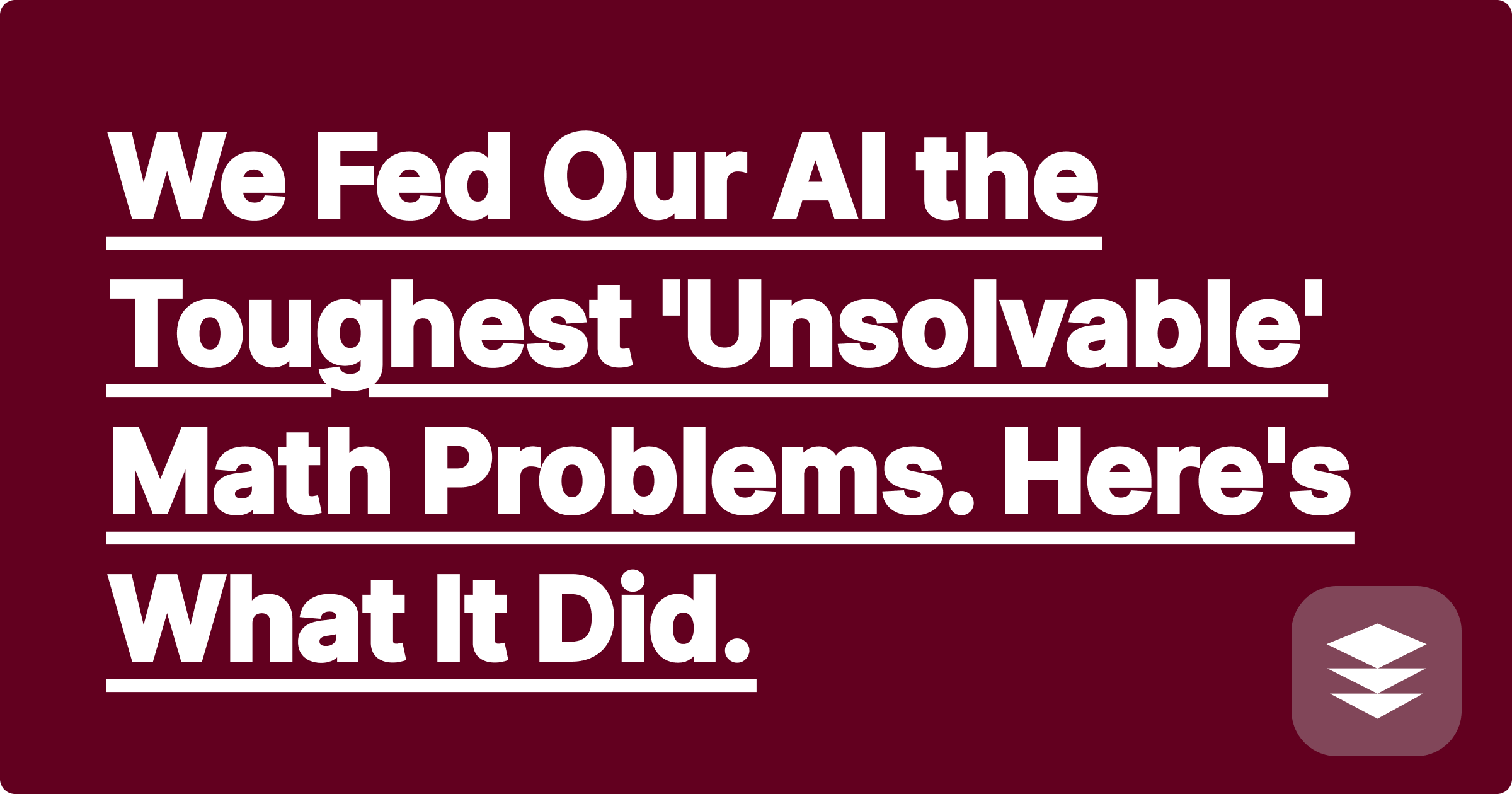
At the dawn of the new millennium, the Clay Mathematics Institute identified seven "Millennium Prize Problems"—some of the most difficult and profound unsolved questions in mathematics. A correct solution to any of them comes with a $1 million prize. These problems, like the Riemann Hypothesis or the P vs. NP problem, have stumped the greatest human minds for decades, or even centuries. So, a fascinating question arises: can AI solve Millennium problems?
We decided to put this to the test. We took the problem statements for some of these famous unsolved problems and fed them into our most advanced GPAI Solver. This wasn't just a fun experiment; it was a way to probe the very limits of ai mathematical reasoning. We didn't expect a million-dollar answer, but what we found was incredibly revealing about what AI can—and can't—do today.
The results of this experiment are profound. The AI failed to solve the unsolvable, but it succeeded at something else: it acted as the world's best tutor on these topics. For any student struggling to understand what these famous problems are even about, the solver can provide an instant, high-quality explanation. It's a powerful tool for building foundational knowledge. You can even use the GPAI Cheatsheet as a note taker to create a personal guide to the great unsolved problems of mathematics.
So, can an AI solve a Millennium problem today? No. But this experiment points to the future. The path to solving these problems will likely not be "human vs. machine," but "human + machine." A brilliant mathematician will have a flash of insight, a new idea for an approach. They will then use an AI assistant to:
A: It can perform incredibly complex deductive reasoning—following logical steps from a set of premises to a conclusion. This is what makes it a powerful solver for homework problems. It cannot (yet) perform the kind of abductive or creative reasoning required to invent a completely new mathematical framework, which is what's needed for these grand challenges.
A: It teaches a critical lesson about the responsible use of AI. Use the solver to learn established knowledge and check your work. But understand that the truly novel, creative insights must still come from your own human mind. The AI is your assistant, not your replacement.
While an AI may not claim a Millennium Prize on its own anytime soon, its ability to explain, calculate, and organize information is already a revolutionary tool for learning. It puts the knowledge of a world-class mathematics library at your fingertips, helping you master the known so you can one day explore the unknown.
[Explore the frontiers of mathematics with a powerful AI assistant. Try the GPAI Suite today. Sign up for 100 free credits.]
What if Newton Had an AI? How 'Principia Mathematica' Could Be Written in a Week
Could You Run a Simulated Mars Colony Using an Engineering AI Solver?
Teach Me Poker': Can Game Theory AI Explain Winning Strategies?
What if Your Entire Degree Was an Open-Book Exam? How to Prepare with AI.
Re-writing History: What if the Titanic Was Designed with FEA and AI?
The Psychology of the 'Humanizer': Why We Trust 'Natural' Language More
A Day in the Life of a GPAI Engineer: The Problems We Solve for You
We Fed Our AI the Toughest 'Unsolvable' Math Problems. Here's What It Did.
The Carbon Footprint of Your Brain vs. AI: An Energy Efficiency Comparison
Bad Handwriting' Hall of Fame: Can Our AI Read Your Professor's Scrawl?